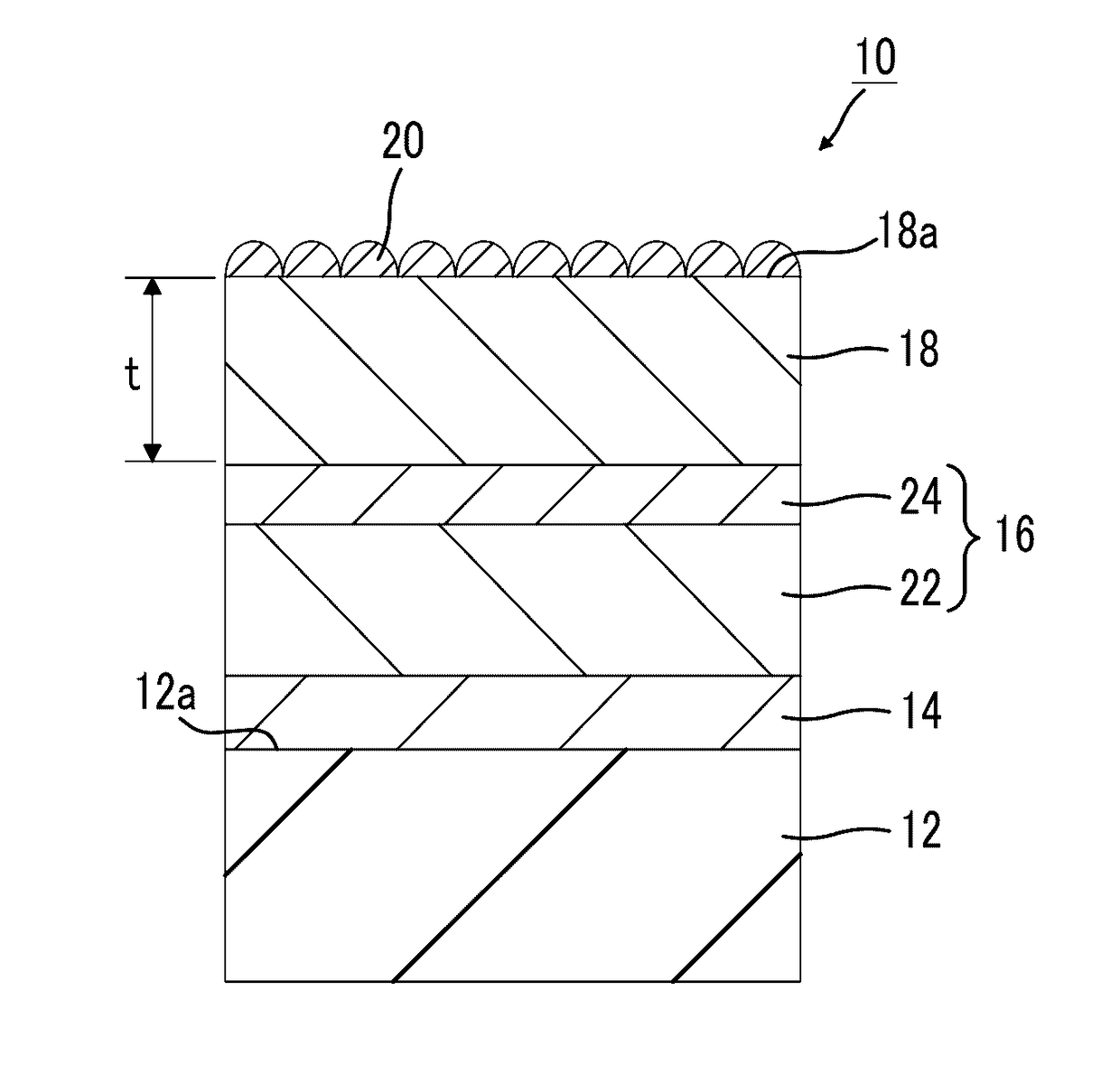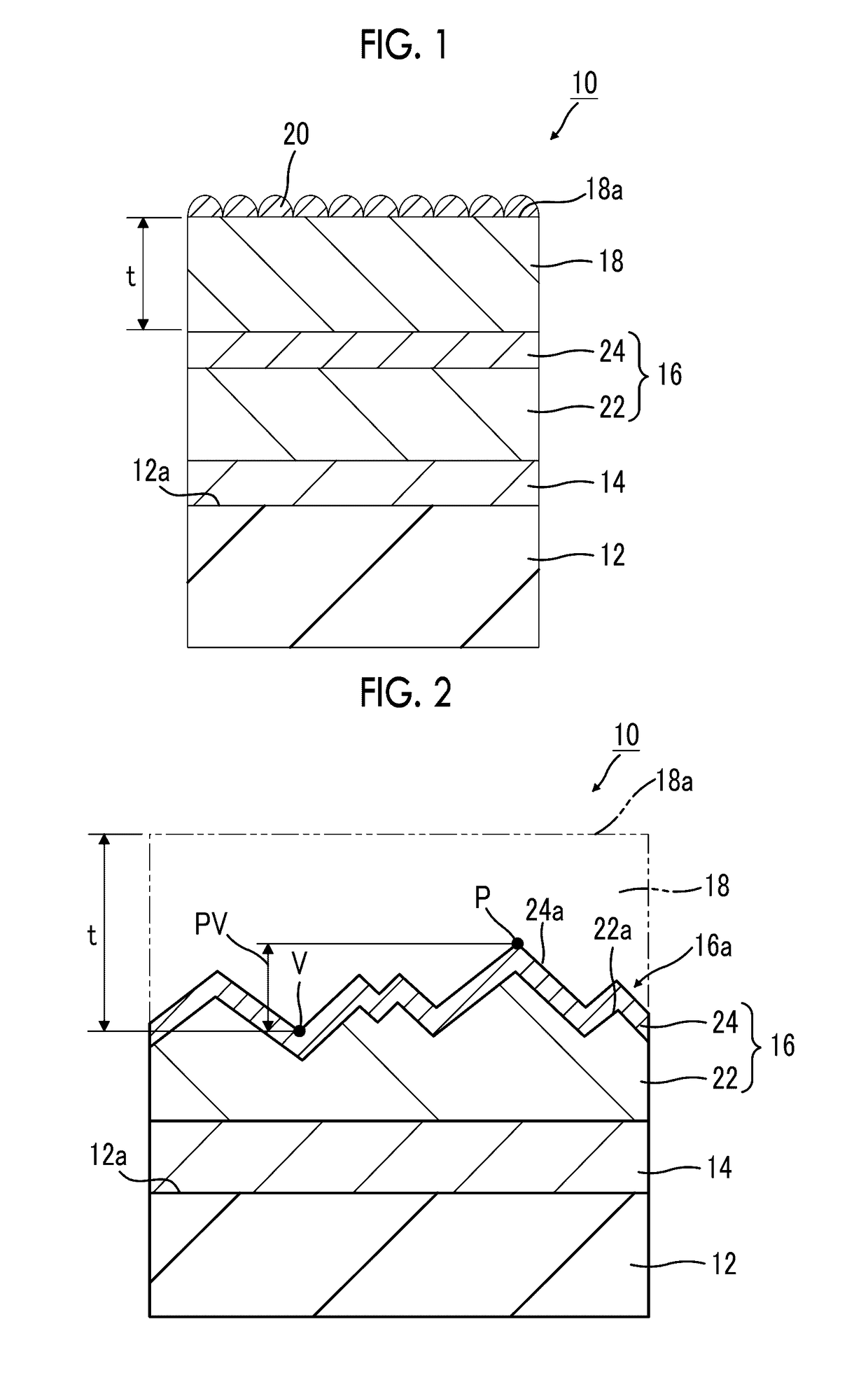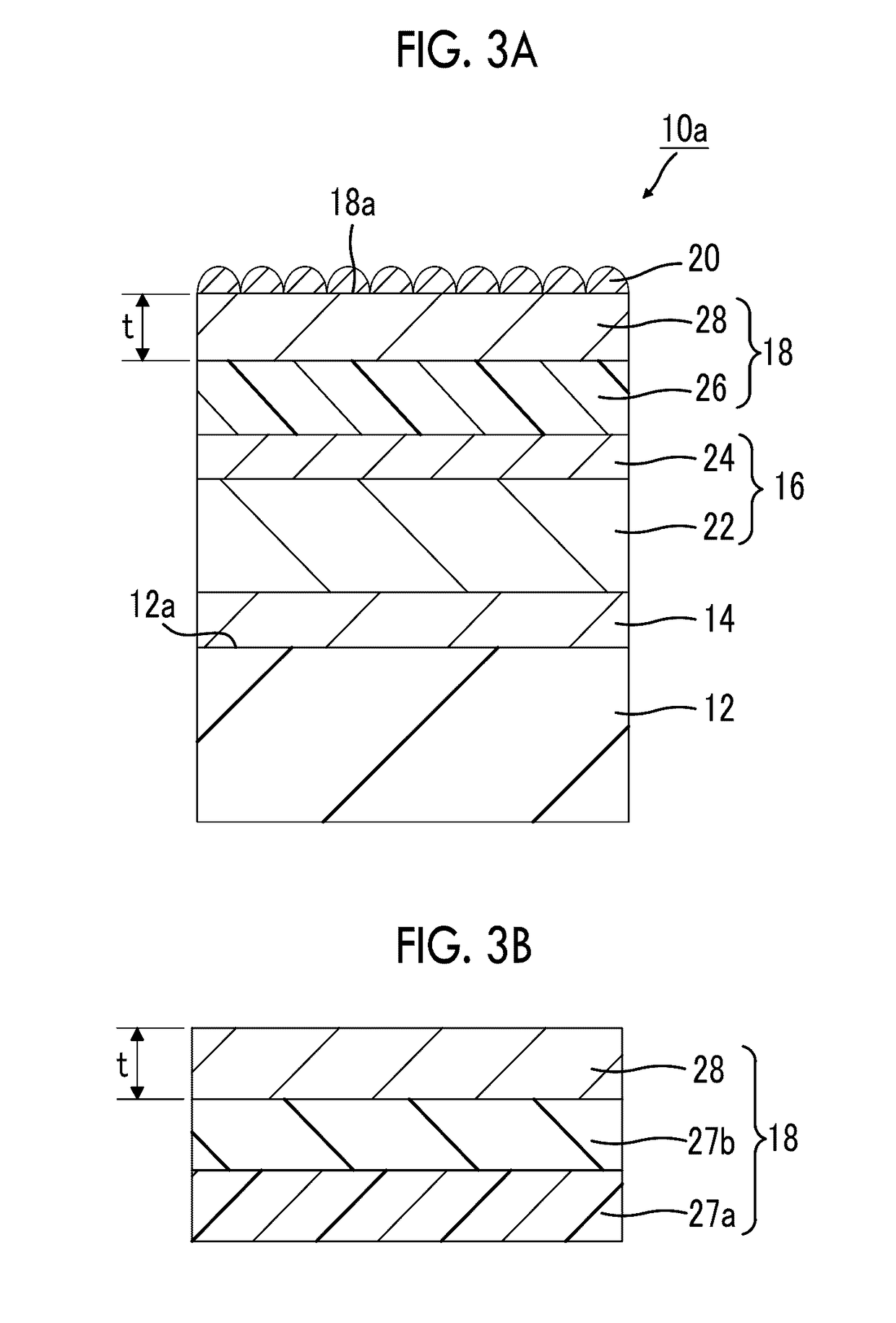Hydrogen generation electrode and artificial photosynthesis module
a technology of photosynthesis module and hydrogen generation electrode, which is applied in the direction of electrode coating, oxygen/ozone/oxide/hydroxide, multiple component coating, etc., can solve the problems of destructing the photoelectric conversion part and reducing the durability
- Summary
- Abstract
- Description
- Claims
- Application Information
AI Technical Summary
Benefits of technology
Problems solved by technology
Method used
Image
Examples
example 1
[0142]A hydrogen generation electrode of Example 1 has the same configuration as the hydrogen generation electrode 10 illustrated in FIG. 1. The configurations of respective parts are as follows. In the hydrogen generation electrode of Example 1, an exposed portion was covered with epoxy resin and insulated after a conducting wire was connected to a conductive layer.
[0143]
[0144]Insulating substrate: Soda lime glass, 1 mm in thickness
[0145]Conductive layer: Mo, 500 nm in thickness
[0146]Inorganic semiconductor layer (peak-valley value (PV): 470 nm)
[0147]p-type semiconductor layer: CIGS, 1500 nm in thickness
[0148]n-type semiconductor layer: CdS, 50 nm in thickness
[0149]Functional layer: amorphous ITO, 600 nm in thickness
[0150](Steam permeability: 1.2 g / (m2·day))
[0151]Co-catalyst: Pt
[0152]In addition, as for the peak-valley value, after the formation of the hydrogen generation electrode, a portion of the hydrogen generation electrode was cut, and a sectional scanning electron microscope...
example 2
[0168](Making of Oxygen Generation Electrode)
[0169]A solution in which 1.0 g of nitric acid bismuth pentahydrate and 3.0 g of sodium iodide were dissolved with 50 ml of nitric acid with pH 1.7 was prepared. This solution was mixed with a solution in which 0.5 g of 1,4-benzoquinone was dissolved in 20 ml of ethanol, and ultrasonic waves were applied to dissolve the obtained solution. The obtained solution was put into a container for electrodeposition (a three-electrode system cell), a working electrode was set in a substrate with a transparent electrode, Ag / AgCl (4M KCl) was set in a reference electrode, and a platinum wire was set in a counter electrode. Electrodeposition was performed for 10 minutes on the working electrode and the reference electrode while maintaining a potential range of −0.1 V to −0.3 V. A BiOI thin film electrode was obtained by drying the electrodeposited electrodes.
[0170]Next, after the BiOI thin film electrode was immersed in a dimethyl sulfoxide solution (...
PUM
| Property | Measurement | Unit |
|---|---|---|
| thickness | aaaaa | aaaaa |
| thickness | aaaaa | aaaaa |
| thickness | aaaaa | aaaaa |
Abstract
Description
Claims
Application Information
 Login to View More
Login to View More - R&D
- Intellectual Property
- Life Sciences
- Materials
- Tech Scout
- Unparalleled Data Quality
- Higher Quality Content
- 60% Fewer Hallucinations
Browse by: Latest US Patents, China's latest patents, Technical Efficacy Thesaurus, Application Domain, Technology Topic, Popular Technical Reports.
© 2025 PatSnap. All rights reserved.Legal|Privacy policy|Modern Slavery Act Transparency Statement|Sitemap|About US| Contact US: help@patsnap.com



